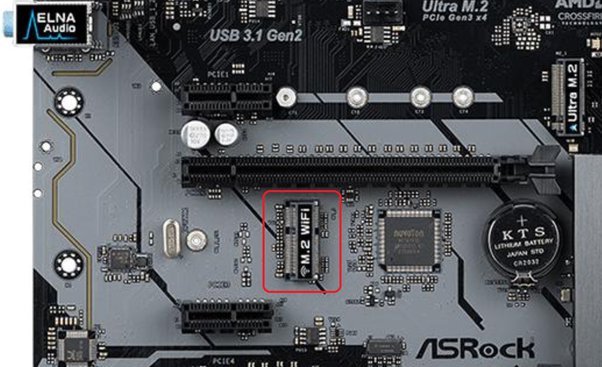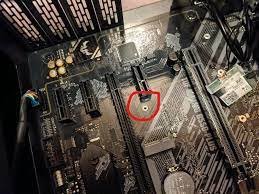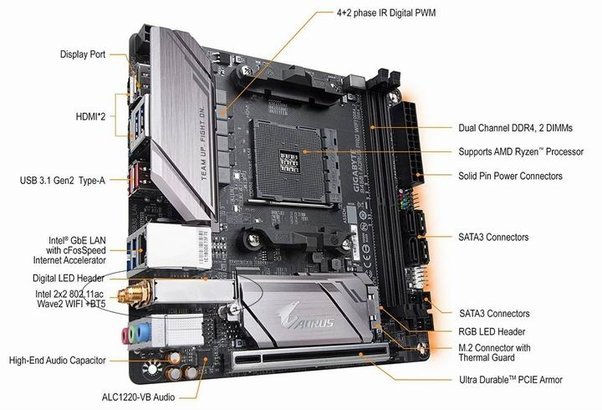In the digital age, connectivity is paramount. Whether for work, leisure or simply staying in touch, having reliable internet access is essential. One common question that arises is whether all motherboards come equipped with WiFi capabilities.
No, not all motherboards have WiFi. Some do, but others require a separate WiFi adapter to connect to wireless networks. It depends on the specific model and brand of the motherboard you’re using.
In this article, We will discuss “Do All Motherboards Have Wifi”.
Understanding Motherboard Connectivity:
What is a Motherboard?
Before we dive into the specifics of Wi-Fi connectivity, let’s first understand what a motherboard is. In simple terms, a motherboard is the main circuit board of a computer.

It houses essential components such as the CPU, RAM, and expansion slots, acting as the central hub that allows these components to communicate with each other.
Read: Power Supply Not Turning On When Connected To Motherboard – 2024 Guide!
Importance of Connectivity:
Connectivity features play a vital role in modern motherboards. They determine how effectively your system can communicate with external devices, networks, and the internet. In today’s fast-paced digital landscape, seamless connectivity is no longer a luxury but a necessity.
Read: Do I Need To Upgrade My Motherboard – Ultimate Guide – 2024
Wi-Fi on Motherboards: Not Universal
Built-in Wi-Fi:
Contrary to popular belief, not all motherboards come with built-in Wi-Fi capabilities. While some high-end models do include integrated Wi-Fi adapters, many mid-range and budget-friendly motherboards lack this feature.
Read: What Are Motherboard Power Stages – Ultimate Guide – 2024
Cost Considerations:
The inclusion of Wi-Fi functionality can significantly impact the cost of a motherboard. Manufacturers often prioritize other features over built-in Wi-Fi to keep the overall price competitive.
As a result, consumers need to weigh their connectivity needs against their budget when choosing a motherboard.
Read: White Light On Motherboard – Ultimate Guide – 2024
Do All Motherboards Have Built-in Wi-Fi?
Exploring Inclusion and Exclusion:
Not all motherboards come equipped with Wi-Fi capabilities out of the box. Traditionally, motherboards relied on wired Ethernet connections for internet access, requiring separate Wi-Fi adapters for wireless connectivity.
Read: Motherboard Red Light – Comprehensive Guide – 2024
Types of Motherboards with Built-in Wi-Fi:
Identifying Wi-Fi Enabled Models:
Certain motherboard models, especially those designed for compact form factors such as Mini-ITX, frequently include built-in Wi-Fi to accommodate space constraints and offer convenience to users seeking wireless connectivity without additional adapters.
Read: Am4 Motherboard Tier List – Ultimate Guide – 2024
Do All Motherboards Have Wifi For Gaming?
Not all motherboards come with built-in Wi-Fi for gaming. While some gaming motherboards offer Wi-Fi connectivity, others may require separate adapters. It’s essential to check the specifications of the motherboard to see if it includes Wi-Fi capabilities.
Do All Motherboards Have Wifi On Laptop?
Not all laptops have Wi-Fi built into the motherboard. However, many modern laptops do include Wi-Fi as a standard feature. It allows them to connect to the internet wirelessly without needing additional hardware.
Read: How To Check If SSD Is Compatible With Motherboard – Guide 2024!
Do Motherboards Come With Wi-Fi and Bluetooth?
Yes, some motherboards do come with built-in Wi-Fi and Bluetooth. It’s like having internet and wireless connection abilities already inside the computer’s main board. This can be handy for connecting to the internet and other devices without extra adapters.
Motherboard With Wifi Vs Without:
A motherboard with Wi-Fi has built-in wireless connectivity, allowing you to connect to the internet without additional hardware.
A motherboard without Wi-Fi requires you to use Ethernet or add a separate Wi-Fi adapter for wireless connectivity, which may offer more flexibility but requires extra steps and costs.
How do I find out if my motherboard has Wi-Fi?
To check if your motherboard has Wi-Fi, look for ‘Wi-Fi’ or ‘Wireless LAN’ in its specifications or model name.
You can also inspect the I/O ports on the motherboard; if there are antenna connectors or integrated antennas, it likely includes Wi-Fi functionality.
What to do if your motherboard doesn’t have Wi-Fi?
If your motherboard doesn’t have Wi-Fi, you can add it by using a USB Wi-Fi adapter or installing a PCIe or M.2 Wi-Fi card.
Simply plug the adapter into a USB port or install the card into an available slot on your motherboard, then install the necessary drivers.
Does every motherboard have WiFi card slot?
Not every motherboard has a dedicated slot for a WiFi card. Some motherboards come with built-in WiFi, while others may require the addition of a PCIe or M.2 WiFi card for wireless connectivity. It depends on the model and its features.
Importance of Bluetooth and Wi-Fi in Modern Computing:
Bluetooth and Wi-Fi are vital in modern computing for seamless connectivity. Wi-Fi enables internet access, facilitating online tasks and communication.
Bluetooth allows wireless connection of peripherals like keyboards, mice, and headphones, enhancing convenience and productivity in everyday computing tasks across various devices.
How To Tell If A Motherboard Has Wi-Fi?
To check if a motherboard has WiFi, look for ‘WiFi’ or ‘Wi-Fi’ in its name or specifications. Additionally, inspect the I/O ports on the motherboard; if it has antenna connectors or integrated antennas, it likely includes WiFi functionality.
How to Add Wi-Fi and Bluetooth Functionality to a Motherboard?
You can add WiFi and Bluetooth to a motherboard by using USB dongles or PCIe expansion cards. Simply plug them into the appropriate ports on your motherboard, install any necessary drivers, and you’re ready to go.

What motherboard has Wi-Fi?
Some motherboards come with built-in WiFi, such as those labeled as ‘WiFi’ or ‘Wi-Fi’ in their name or specifications. Look for models from brands like ASUS, MSI, Gigabyte, and ASRock that mention WiFi connectivity.
Whats the deal with wifi built into motherboards?
WiFi built into motherboards is less common because it’s cheaper for manufacturers to omit it. Users can easily add WiFi through USB or PCIe adapters. This approach gives flexibility and saves money for both manufacturers and buyers.
Why do so few new motherboards have WiFi built in?
New motherboards often lack built-in WiFi because it’s cheaper and simpler for manufacturers to produce models without it. Plus, many users prefer to choose their own WiFi adapters based on specific needs and preferences.
What happens if you buy a motherboard without Wifi?
If you buy a motherboard without Wi-Fi, you’ll need to use an Ethernet cable to connect to the internet.
Alternatively, you can purchase a separate Wi-Fi adapter to add wireless connectivity. Make sure to check the specifications of the motherboard to see if it supports adding a Wi-Fi adapter.
Are Wi-Fi and Bluetooth adapters built-in to the motherboard?
Yes, some motherboards come with built-in Wi-Fi and Bluetooth adapters. You can find this information in the motherboard specifications or manual. Look for terms like “integrated Wi-Fi” or “Bluetooth onboard” to see if these features are included.
Does my motherboard have a built-in sound card and wifi?
Yes, your motherboard might have a built-in sound card and wifi. Check the specifications or manual of your motherboard to confirm. Look for terms like “onboard audio” or “integrated wifi” to see if these features are included.
Do generic “WiFi-Ready” motherboards exist?
Yes, “WiFi-Ready” motherboards exist. These motherboards do not have built-in WiFi capabilities but are designed to easily accommodate a separate WiFi adapter. Users can install a compatible WiFi adapter to enable wireless internet connectivity on these motherboards.
Whats the difference between wifi and non wifi motherboard?
The main difference between a WiFi and a non-WiFi motherboard is that the WiFi motherboard includes built-in hardware to connect to wireless networks, while the non-WiFi motherboard does not.
This means a WiFi motherboard can access the internet wirelessly, while a non-WiFi motherboard requires a separate adapter for wireless connectivity.
Motherboard With Built-In Wifi And Bluetooth?
A motherboard with built-in WiFi and Bluetooth has integrated hardware to connect to both wireless networks and Bluetooth devices.
This allows for convenient wireless internet access and the ability to connect Bluetooth peripherals like keyboards and mice.
Motherboard Wifi Adapter?
A motherboard WiFi adapter is a component built into certain motherboards that allow the computer to connect to wireless networks without needing an additional adapter. It enables wireless internet access directly through the motherboard.
Built in wifi motherboard vs wifi card?
A built-in WiFi motherboard has WiFi built into the board, saving space and making setup easy. A WiFi card is separate and can be added to any motherboard, allowing for upgrades. Both options provide wireless internet, but built-in WiFi is more convenient, while a WiFi card offers flexibility.
Do motherboards come with wifi and bluetooth?
Yes, some motherboards come with built-in WiFi and Bluetooth. These features allow you to connect to the internet and other devices wirelessly. However, not all motherboards have these features, so you need to check the specifications before buying.
Does any motherboard have WiFi?
No, not all motherboards have WiFi. Some motherboards come with built-in WiFi, while others do not. If you need WiFi, check the specifications of the motherboard before buying or add a separate WiFi card to the motherboard.
Do all motherboards support WiFi cards?

Not all motherboards support WiFi cards. Some newer motherboards have built-in WiFi, but older or cheaper ones might not. You can check if your motherboard supports WiFi by looking at its specifications or checking for PCIe slots, which are needed for WiFi cards.
What to do when the motherboard doesn’t have WiFi?
When your motherboard doesn’t have WiFi, you can use a USB WiFi adapter or a PCIe WiFi card. USB adapters plug into a USB port and are easy to install.
PCIe cards require opening the computer case and slotting them into the motherboard. Both options provide WiFi connectivity.
Is WiFi part of the motherboard?
No, WiFi is not typically part of the motherboard. Some motherboards may have built-in WiFi, but most require a separate WiFi card or adapter for wireless internet. These cards or adapters connect to the motherboard via USB or PCIe slots to provide WiFi functionality.
Do Motherboards come wifi compatible out of the box?
Yes, some motherboards come with built-in WiFi, but not all do. If a motherboard is WiFi-compatible, it means it has WiFi features ready to use when you set up your computer. If it’s not WiFi-compatible, you may need to use a separate WiFi card or adapter.
What’s the difference between wifi and non wifi motherboard?
A WiFi motherboard has built-in WiFi capability, allowing it to connect to wireless networks without needing extra adapters.
A non-WiFi motherboard lacks this feature, so you’ll need to use a separate WiFi adapter or Ethernet cable to connect to the internet. Both types can support wired internet connections.
What does it mean when a motherboard has no wireless networking?
When a motherboard has no wireless networking, it means it doesn’t have built-in WiFi capability. You’ll need to use a separate WiFi adapter or connect to the internet using an Ethernet cable.
This is common in motherboards designed for desktop computers, which often prioritize wired connections.
Does an expensive motherboard improve a computer’s performance?
An expensive motherboard doesn’t necessarily improve a computer’s performance by itself. Performance is more affected by the CPU, GPU, and RAM.
Expensive motherboards may offer more features, like better overclocking or connectivity options, but for most users, a mid-range motherboard provides sufficient performance without overspending.
Does my motherboard have wifi?
Check your motherboard’s model number online or in the manual. Some motherboards have built-in WiFi, but not all. Look for “WiFi” or “Wireless” in the specifications. If you don’t find it, your motherboard likely doesn’t have WiFi.
What does wifi on a motherboard do?
WiFi on a motherboard allows your computer to connect to the internet wirelessly. This means you don’t need a cable to get online. It makes setting up and using your computer easier, especially if you can’t run cables to your router.
Do motherboards have built in wifi?
Yes, some motherboards have built-in WiFi. These motherboards come with a WiFi adapter already installed, so you don’t need a separate card. However, not all motherboards have this feature, so it’s important to check the specifications before buying.
Do Motherboards Come With Wifi Antennas?
Some motherboards with built-in WiFi include WiFi antennas in the package. However, not all do. It’s essential to check the specifications or packaging to see if a WiFi antenna is included with the motherboard you’re considering purchasing.
Are all modern motherboards WiFi-enabled?
No, not all modern motherboards come with WiFi capabilities. It depends on the manufacturer and model.
Can I add WiFi to a motherboard that doesn’t have it?
Yes, you can add WiFi to a motherboard through various means, such as installing a WiFi adapter or using a PCIe WiFi card.
Are there any disadvantages to WiFi-enabled motherboards?
While WiFi-enabled motherboards offer convenience, they may be slightly more expensive than non-WiFi counterparts. Additionally, some users prefer wired connections for stability and speed.
How does WiFi integration affect gaming performance?
WiFi integration can impact gaming performance depending on factors like signal strength and latency. For optimal gaming experiences, some users prefer wired connections.
Can I upgrade the WiFi capabilities of my motherboard?

Yes, you can upgrade the WiFi capabilities of your motherboard through various means, such as installing a newer WiFi module or upgrading to a motherboard with better WiFi features.
FAQs:
1. Should you buy a motherboard with WiFi included?
It depends on your needs. If you require wireless internet connectivity and want convenience, buying a motherboard with WiFi included can be a good choice. Otherwise, if you prefer a wired connection or already have a separate WiFi adapter, it may not be necessary.
2. Do motherboards with built-in WiFi need to use an antenna?
Yes, motherboards with built-in WiFi usually need to use an antenna. The antenna helps improve the WiFi signal strength and stability, ensuring a better and more reliable wireless connection.
3. What does WiFi in a motherboard mean/do?
WiFi in a motherboard means it has built-in hardware to connect to wireless networks. This allows the computer to access the internet and other network resources without needing an external WiFi adapter.
4. Will a motherboard with a built-in WiFi have a bad lag?
A motherboard with built-in WiFi typically does not have bad lag if the WiFi signal is strong and stable. However, performance can vary based on factors like distance from the router and network congestion.
5. What does it mean when a motherboard has “built-in WiFi”?
When a motherboard has “built-in WiFi,” it means it includes hardware to connect to wireless networks without needing an external WiFi adapter. This allows the computer to access the internet wirelessly right out of the box.
6. What does built-in wifi mean?
Built-in WiFi means that a device, like a computer or smartphone, has the necessary hardware to connect to wireless networks without needing extra equipment or adapters. It allows for easy internet access via WiFi.
7. Is it possible to get rid of WiFi interference?
Yes, it is possible to reduce WiFi interference. You can change the router’s channel, place the router in a central location, avoid physical obstructions, and keep it away from other electronic devices that may cause interference.
8. Does a built-in WiFi mean free internet?
No, built-in WiFi does not mean free internet. It only allows the device to connect to a wireless network. You still need an internet service provider (ISP) to access the internet.
9. Is a WiFi adaptor inbuilt in a DEKSTOP PC (I5 motherboard)?
A WiFi adapter is not always built in a desktop PC with an i5 motherboard. Some PCs have it, but others need an external WiFi adapter. Check the PC’s specifications to know for sure.
10. Does an i5 motherboard (HP) come with an inbuilt WiFi adapter?
Not all i5 motherboards from HP come with inbuilt WiFi. Some models have it, while others do not. Check the specific motherboard model’s specifications to see if it includes a WiFi adapter.
11. Can you add WiFi to a motherboard that doesn’t have WiFi?
Yes, you can add WiFi to a motherboard without it. Use a USB WiFi adapter or a PCIe WiFi card. Both options are easy to install and will let your computer connect to wireless networks.
Conclusion:
In conclusion, not all motherboards come with built-in WiFi, as it varies depending on the model and brand. While some offer integrated WiFi for convenience, others require separate adapters. Cost considerations and user preferences play a significant role in choosing a motherboard. However, regardless of WiFi availability, options exist to add wireless connectivity, ensuring accessibility for all users.
